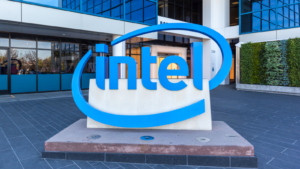
Demand for artificial intelligence microchips shows no signs of slowing down. According to market research firm Gartner, by 2027, global AI chips revenue is expected to be more than double the size of the market in 2023, growing to $119.4 billion. Demand for chips is so high that many companies, including Microsoft (NASDAQ:MSFT) and Amazon (NASDAQ:AMZN) have announced plans to begin manufacturing their own chips going forward.
This all bodes well for the companies that specialize in the design and manufacture of the microchips and semiconductors that power the most advanced artificial intelligence models and platforms. Here are three must-own stocks as demand for AI chips soars.
Taiwan Semiconductor Manufacturing Co. (TSM)

Few if any companies are as important to AI microchips as Taiwan Semiconductor Manufacturing Co. (NYSE:TSM). The company, which is based in Taiwan, makes nearly three-quarters (75%) of all the microchips and semiconductors in the world. It has a near-monopoly position when it comes to fabricating chips and semis. While there are some political risks involved in TSM stock with China’s sovereign claims over Taiwan, they don’t take away from this company’s huge growth potential.
There’s an opportunity to buy TSM stock right now as it has retreated 11% from its 52-week high since the summer of this year and is currently trading 30% below the all-time high its shares reached in January 2022. For a tech company with a nearly half trillion dollar market cap, Taiwan Semi’s valuation looks cheap right now with the stock trading at 17 times future earnings estimates. And TSM stock pays a decent dividend of 46 cents per share each quarter, for a yield of 1.85%.
The median price target on TSM stock is 16% higher than where the shares currently trade.
Intel (INTC)

Hoping to give Taiwan Semiconductor a run for its money in the microchip production business is Intel (NASDAQ:INTC). The company is spending billions of dollars with the goal of becoming the second largest chip foundry by 2030, behind TSMC. While Intel is investing huge sums of money to achieve its ambitions, the company’s latest financial results seem to suggest that the gamble is starting to pay off. INTC stock rose 7% in one day following the company’s Q3 print.
For this year’s third quarter, Intel reported earnings of 41 cents per share versus 22 cents that had been expected. Revenue amounted to $14.16 billion versus $13.53 billion that was anticipated. Company executives reiterated plans to cut costs by $3 billion this year and stressed that operating expenses were 15% lower than a year ago. The company’s foundry unit remains a small part of Intel’s overall business. However, the foundry business’ sales grew nearly 300% from a year ago to reach $311 million in Q3.
During an earnings call with analysts and media, Intel’s management team said that the company is on track to catch up with Taiwan Semiconductor’s chipmaking technology by 2025. INTC stock has gained 68% this year.
Arm Holdings (ARM)

Now for the new kid on the block. That would be Arm Holdings (NASDAQ:ARM). Not only are the British company’s microchips found in nearly every smartphone on the planet, but it just recently unveiled a new new Cortex-M52 processor that’s capable of running AI applications on the smallest Internet of Things (IOT) devices. Arm Holdings has also established a partnership with Nvidia (NASDAQ:NVDA), the world’s leading AI chip designer to develop chips for personal computers.
Arm only went public in September of this year. And while its stock has pulled back since its heavily hyped initial public offering (IPO), there’s reason to be optimistic about the company and the future of its stock. Arm’s first earnings report as a publicly traded concern contained some encouraging numbers. If nothing else, Arm is already profitable, which is more than can be said for most companies that go public these days.
The company reported earnings per share (EPS) of 36 cents, which was in line with analyst forecasts. Revenue totaled $806 million versus $744.3 million that was expected. The company’s revenue was up 28% from a year earlier, and Arm boasted that it sold more than 7.1 billion microchips during Q3 of this year. Since its market debut, ARM stock has gained 2%.
On the date of publication, Joel Baglole held long positions in NVDA and MSFT. The opinions expressed in this article are those of the writer, subject to the InvestorPlace.com Publishing Guidelines.






